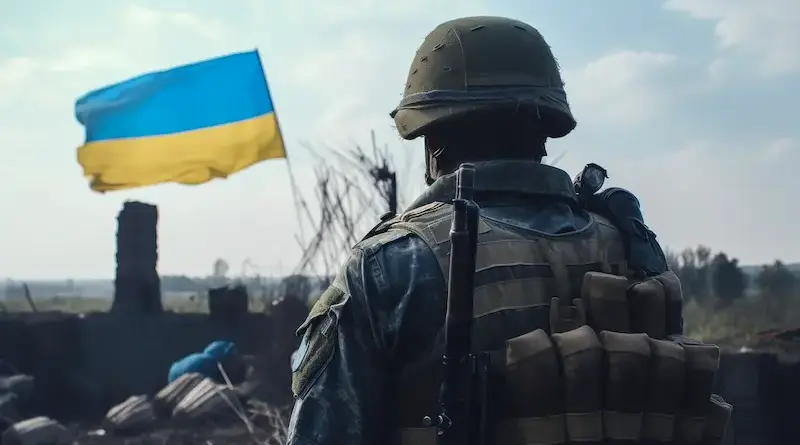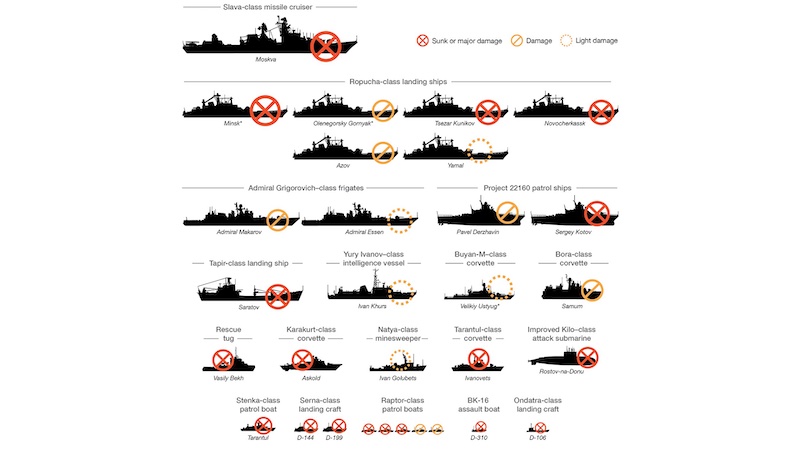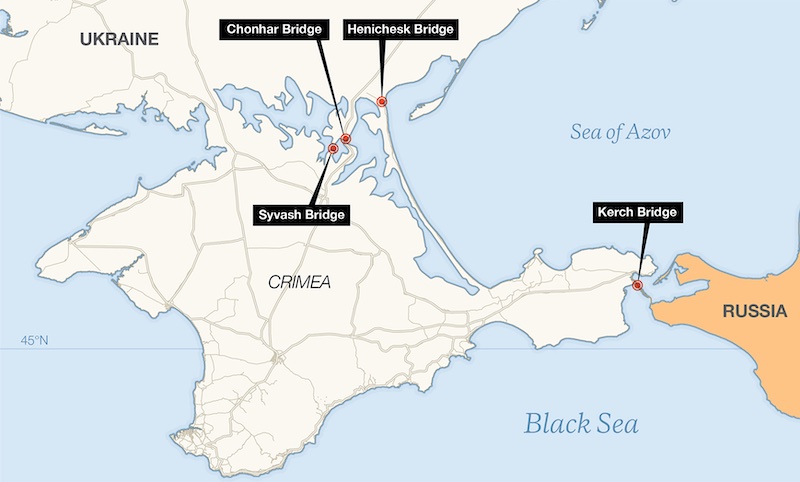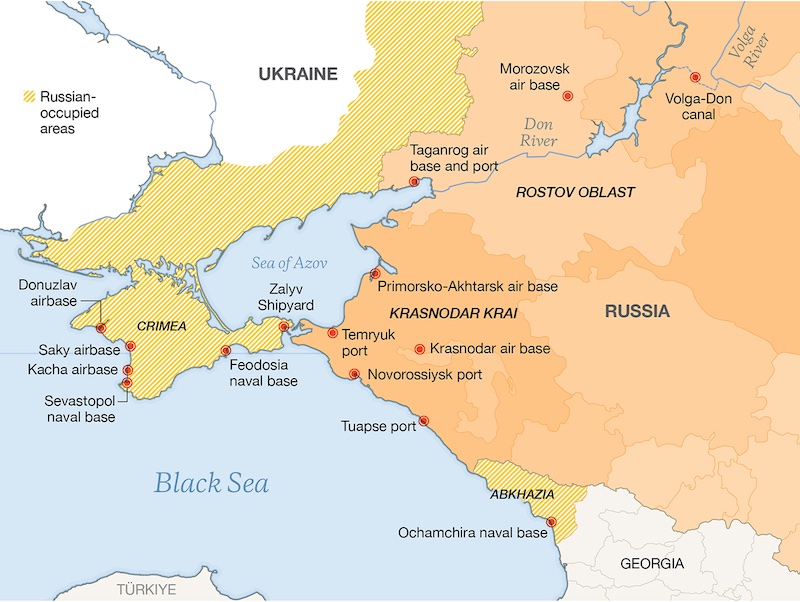Luke Coffey and Peter Rough

Introduction
As Russia’s large-scale invasion of Ukraine enters its third year, now is a propitious moment to take stock of the United States’ approach to the war. After Ukraine’s staunch defense of Kyiv in spring 2022 and its successful Kharkiv and Kherson offensives later that year, the West had high expectations for Ukraine’s 2023 counteroffensive in the south and east. That Ukraine did not achieve all its objectives in that campaign says less about Ukraine’s military than it does about Kyiv’s Western supporters. Regrettably, the West did not provide Ukraine what it needed in a timely fashion to liberate its territory.
Ukraine neither needs nor wants US boots on the ground. Unlike in Iraq or Afghanistan, there are no American soldiers fighting in Ukraine, and the leadership in Kyiv has not asked for American soldiers to join the fight. All that Ukrainians have requested are the weapons, munitions, and equipment that they need to fight off the Russian invasion themselves.
In the early months of the conflict, the US led the way in providing Ukraine with crucial supplies. However, US support has fallen off dramatically. By almost any measure of aid—military, economic, or humanitarian—Europe now significantly outpaces the US in support to Ukraine.
With Russian momentum building, the US needs to adjust its approach to match the new reality. As one of us, Luke Coffey, wrote last spring before Ukraine’s counteroffensive, “If Ukraine’s counteroffensive stalls, or even fails, it’s no excuse to end support. On the contrary, it would be a time to learn from mistakes, keep the weapons flowing and the training going and prepare Ukraine for the war’s next phase.” That next phase begins now.
A Strategy of Courage
There are currently two major issues plaguing US assistance to Ukraine: congressional delays and White House indecisiveness. As of this writing, Congress last approved funding for Ukraine on December 23, 2022. While Europe has stepped up to try to fill the gap, Ukrainians on the front lines are feeling the absence of American support. On a visit to Ukraine last month, the authors of this policy memo confirmed that Ukrainian forces are not only rationing artillery shells, air defense interceptors, and multiple-launch rocket system (MLRS) rockets, but apparently also small arms ammunition (5.56mm and 7.62mm rounds). The lack of US assistance helps explain Russia’s recent victory at Avdiivka.
To solve this, the White House needs to adopt a strategy of courage. Even if Congress approved a large package for Ukraine, President Joe Biden remains unwilling to empower Kyiv to deliver decisive blows against the Russian military. Biden’s aim should not be to support Ukraine “for as long as it takes.” He needs to commit to providing support until Ukraine wins. In particular, Ukraine urgently needs long-range weapons such as the M57 Block IA variant of the MGM-140 Army Tactical Missile System (ATACMS), which has a range of 190 miles (300 km). Senior Ukrainian officials say that the White House will not authorize the transfer of long-range weapons because Washington is concerned that Ukraine would use them to strike targets inside the Russian Federation. But Ukrainian strikes inside Russia have not triggered cataclysmic escalation.
With Ukraine’s fate in the balance—and the West’s credibility at stake—America and its allies should recognize the historic times we face and step up our support.
Such a strategy of courage would have three main goals in 2024:
1. Rearm, resupply, and train the Ukrainian military for offensive operations between fall 2024 and spring 2025. This should include, but certainly not be limited to, (1) long-range fires such as the 190-mile version of the ATACMS, (2) additional air-launched cruise missiles from the UK, France, and Germany, (3) F-16s and associated munitions, (4) more infantry fighting vehicles and main battle tanks, (5) demining and engineering equipment, and (6) a steady stream of 155mm artillery and 120mm mortar rounds. Simultaneously, the US and its allies should continue to train tens of thousands of Ukrainian soldiers in maneuver warfare, incorporating the lessons learned from training missions in the lead-up to Ukraine’s counteroffensive last summer.
2. Enable Ukraine to pursue a Crimea-first strategy. As retired US Army Lieutenant General Ben Hodges has pointed out, Crimea is the war’s “decisive terrain.” In fact, Ukraine has found success at striking high-value targets in Crimea and the Black Sea. The US and its allies should give Ukraine the weapons, equipment, and training it needs to build on this success. The West’s goals should be to (1) ensure that the Russian Navy finds no safety in the Black Sea, (2) sever key supply routes linking the Russian Federation to the Crimean Peninsula, and (3) make Crimea uninhabitable for the occupiers while Ukraine prepares for offensive operations in late 2024 to early 2025.
3. Make history at the 2024 North Atlantic Treaty Organization summit by extending an invitation for Ukraine to join the alliance.The US will host the NATO summit in Washington, DC, this summer, commemorating 75 years of alliance. The situation in Ukraine and the future of NATO-Ukraine relations will be the summit’s primary focus. For the summit to be deemed a success, NATO needs to invite Ukraine to join the alliance. The alliance should leave the official date of Ukraine’s accession open-ended for the time being, to be determined once allies agree that the security environment inside the country is satisfactory. This would show NATO’s commitment to Ukraine’s future and take advantage of a pivotal opportunity to reinforce transatlantic relations.
Rearm Ukraine: The Four S-Initiatives
The two most important things the US can do are (1) pass additional funding for Ukraine in Congress and (2) lift the de facto embargo on the transfer of long-range weapons to Ukraine. Following this, America and its allies should prioritize four S-initiatives to rearm Ukrainian forces:
1. Stabilize the front lines: provide small arms ammunition, rockets, and artillery rounds. Ukraine faces an acute shortage of 155mm artillery shells, 120mm mortar rounds, and rockets of all variants for the M142 High Mobility Artillery Rocket System (HIMARS) and M270 Multiple Launch Rocket System (MLRS). Ukrainian soldiers on the front lines are currently rationing all these munitions. And for the first time since the war started, there are also reports that 5.56mm and 7.62mm ammunition is in short supply. This is unacceptable. The US should prioritize the immediate resupply of these munitions to stabilize the front lines.
2. Supplant Russia in the skies: provide more air defense and F-16s. The arrival of advanced air defense systems has been a game changer for Ukraine. Not only are large population centers like Kyiv and Odesa better protected, but the Ukrainians are also destroying critical Russian air assets. The US and its allies should provide more air defense platforms, especially the MIM-104 Patriot. Additionally, the US needs to lead efforts to ensure that NATO nations transfer F-16s to Kyiv rapidly while ensuring that Ukrainian pilots are properly trained. Furthermore, the US needs to provide Ukrainian F-16s with the weapons to defeat Russian fighters. As of this writing, the US has not publicly committed to providing a single F-16 to Ukraine.
An International Squadron
The US and Ukraine should explore the establishment of an international squadron of pilots to fly F-16s until enough Ukrainian pilots are ready for combat operations. Such a program could utilize the same legal framework already in place for the International Legion of Territorial Defence of Ukraine.
Thousands of F-16s are in service across more than 25 different countries. With America’s help, Ukraine could incentivize retired F-16 pilots to join the Ukrainian Air Force in the model of the Lafayette Escadrille in World War I or the Eagle Squadrons of World War II. Furthermore, Ukraine should explore how it can outsource maintenance and ground crew staffing to private companies until enough Ukrainians are trained to take on these tasks themselves.
3. Strike deep into Russia and occupied Crimea: provide more ATACMS, air-launched cruise missiles, and drones. The US and its allies need to provide Ukraine with long-range weapons that can hit transport links, logistics and supply depots, and military bases everywhere in occupied Ukraine, as well as critical locations inside Russia that enable the Kremlin’s war effort. Along with long-range ATACMS rockets, Ukraine needs air-launched cruise missiles: more French- and British-made SCALP-EGs and Storm Shadows, US-designed missiles for Ukrainian F-16s, and German-made Tauruses. The US and its allies should also work closely with Ukraine as it develops its indigenous drone capabilities to strike deep into the Russian Federation. Washington should rapidly review any export controls or other bureaucratic obstacles that prevent the US from fully assisting Ukraine’s unmanned platform development and remove the roadblocks if possible.
4. Scale up training: provide more resources to equip and train recruits. The US should work with European allies to scale up training for new Ukrainian recruits in locations outside Ukraine. While the UK and European Union have done good work in training Ukrainians so far,these efforts are insufficient and cannot maintain the troop levels Ukraine needs for a protracted war of attrition. The US should work with Kyiv to assess Ukraine’s short- and long-term manpower goals for the war. Then the US should work with like-minded allies to scale up efforts to train and equip the Ukrainian military to meet its long-term manpower goals. At the same time, the Ukrainian government urgently needs to settle the contentious issue of manpower by passing a law that provides the Ukrainian Armed Forces enough forces for a war of national survival.
Enable Ukraine for a Crimea-First Strategy
While its progress on land was limited last year, Ukraine is winning the Battle of the Black Sea. In April 2022, Ukraine garnered international headlines when it sank the Moskva, the Black Sea Fleet’s flagship, in a creative strike using Turkish Bayraktar TB2 drones and Ukrainian Neptune anti-ship cruise missiles. Six months later, in October 2022, Ukraine used unmanned surface vessels packed with 450 kilograms of explosives each to severely damage a Ropucha-class landing ship in Novorossiysk. In September 2023, Ukraine employed British air-launched cruise missiles to destroy a Russian Kilo-class submarine and another Ropucha-class landing ship in a drydock in Crimea. And in March 2024, Ukraine damaged two more Crimea-based Ropucha-class ships in a missile strike. In total, Ukraine has damaged or destroyed at least one-third of the Russian Black Sea Fleet since February 2022 (see figure 1).
US policymakers should recognize that the shortest and most direct path to victory for Ukraine runs through Crimea—so they should arm, train, and equip Ukrainians accordingly. Russia’s war on Ukraine began with the annexation of Crimea, and it will only end when Ukraine regains control of it.
Without the liberation of Crimea, Ukraine will never be safe. The occupied territory is Russia’s key staging ground and resupply base for operations in southern Ukraine. As a first step, Ukraine needs to deny Russia the freedom to operate from Crimea. That fact has not escaped planners in Kyiv, who have repeatedly targeted Russia’s highest value asset on the peninsula: the Kerch Bridge.
The Kerch Bridge opened in 2018 after four years of construction. Ever since, it has served as the essential transportation link connecting the Russian mainland to the Crimean Peninsula. Twice, Ukraine has successfully hit the bridge. In October 2022, an explosion collapsed a portion of the bridge’s westbound vehicle section and damaged its nearby rail line. In July 2023, a second Ukrainian strike temporarily destroyed another section of the bridge, limiting Russian operations for some time.
Figure 1: Ukraine’s Successful Strikes on Russian Black Sea Fleet: Notes: Images are rendered to relative scale. Data is current through April 6, 2024. Some small patrol boats are excluded. Source: Hudson Institute research * Not part of Black Sea Fleet
Ukraine’s success against Crimean targets and the Black Sea Fleet has been largely due to a combination of Ukrainian creativity and Russian vulnerability. It is time for the US to help Ukraine build on its successes and add to its momentum.
While the details of any campaign targeting Crimea are best left to Ukrainian military planners, such a campaign would consist of three general phases:
Phase 1: Isolate Crimea.
The West should prioritize arming Ukraine with the weapons that it needs to destroy, or at least incapacitate, the Kerch Bridge. Because it is the only physical link from Russia to the Crimean Peninsula, rendering the Kerch Bridge impassable would put enormous pressure on Russia’s overland route to Crimea that runs through the occupied cities of Mariupol and Melitopol.
In addition to the Kerch Bridge, therefore, the US should assist Ukraine in targeting key transit nodes along the land bridge of southern Ukraine. In particular, it will be important for Ukraine to destroy or damage the Henichesk, Syvash, and Chonhar Bridges that connect occupied Crimea to Kherson Oblast. Ukraine needs to put constant pressure on these targets and stay one step ahead of Russian engineering units.
Map 1: Key Bridges near Crimea: Source: Authors’ analysis
Phase 2: Make the naval and air bases in Crimea uninhabitable for Russian forces.
This will require the US to deliver Ukraine more long-range ATACMS and air-launched cruise missiles and aid Ukraine’s continued advancement in unmanned systems. To date, Ukraine has had some success striking Russian ships, air defense batteries, electronic warfare platforms, airfields, and headquarters across Crimea using Storm Shadow air-launched cruise missiles and S-200 air defense missiles that have been modified for land-attack roles. Both munitions have limitations, however. The S-200 is an imprecise substitute for more effective long-range systems, and Storm Shadow cruise missiles must be air-launched, limiting their utility while Ukraine does not control the skies. Moreover, because of limitations in the British and French arsenals, air-launched cruise missiles are not available in sufficient numbers. This is why it is so important that the US provides a large number of ATACMS.
Map 2: Russian Targets for Ukraine: Source: Authors’ research.
Phase 3: Strike key facilities inside the Russian Federation.
After Ukraine chases Russian forces from Crimea, it should then deny them safe haven inside Russia. The US should assist Ukraine in creating and building its own capabilities to strike Russian naval and air bases in the Krasnodar Krai and Rostov Oblasts of Russia, which border occupied parts of Ukraine including Crimea. Of course, Ukraine has already successfully launched minor attacks against some Russian bases, ports, airfields, and headquarters in Novorossiysk, Tuapse, Temryuk, and Taganrog. The US should support and encourage those attacks. Additionally, Russia continues to move Iranian goods and smaller Russian naval ships between the Caspian Sea and the Sea of Azov through the Volga-Don Canal. This makes the canal a fair target.
Additionally, there are credible reports that Russia is establishing a new naval base at Ochamchira in Abkhazia, a Russian-occupied region of Georgia. If this is true, the facility would also be a legitimate target for Ukraine. According to the de facto head of Abkhazia’s so-called Security Council, Russia is expected to begin construction on a new naval base sometime this year. Ukraine should take steps to either disrupt or prevent the base’s construction.
The Importance of Odesa
The Black Sea is key to Ukraine’s economy, and Ukraine’s most important port is that of Odesa. To weaken Ukraine’s sovereignty, Russia regularly closed off large swaths of the Black Sea for extended periods of time even before it launched its full-scale invasion of Ukraine.
Once it launched its all-out assault, Russia made the capture of Odesa a major priority, only to be repulsed by Ukrainian defenders at Mykolaiv and elsewhere. Ukraine now controls ten of its eighteen ports, eight of which are operational.
Through the port of Odesa, Ukraine has exported nearly as much grain in the eight months (July 2023–March 2024) since Russia left the Black Sea Grain Initiative as it did during the eleven months (August 2022–July 2023) that the initiative was in force. Given the long distances overland, with rail and road chokepoints along the way, Ukraine cannot export such large volumes of grain and other goods without access to the Black Sea.
It is unclear if this is sustainable, however, because Odesa’s proximity to Crimea means that Odesans have little forewarning of Russian ballistic missile strikes, such as the attacks last month during the visit of Ukrainian President Volodymyr Zelenskyy and Greek Prime Minister Kyriakos Mitsotakis to the port. So long as Russia remains ensconced in Crimea with its Black Sea Fleet at Sevastopol, Ukraine’s economic future remains at risk.
Make History at the NATO Summit
America’s friends and foes alike will be watching the Washington, DC, summit closely. To prove the US is serious about its commitments, Washington should ensure Ukraine receives an invitation to join NATO at the summit this summer.
Because most members do not want Ukraine to formally join the alliance while Kyiv is in an active war against another country, the start date for Ukraine’s membership should be deferred. Last year, President Zelenskyy acknowledged that Ukraine “will not be a NATO member, while the war is waging.” Even the UK-Ukraine Agreement on Security Cooperation, published in January 2024, offered future British security guarantees to Ukraine if it “is ever attacked by Russia again.” Nonetheless, this should not prevent the alliance from extending Ukraine an invitation at the summit. An invitation does not mean immediate and automatic membership.
Here is an example of language NATO could use in the Washington summit communiqué to invite Ukraine to join the alliance:
We fully support Ukraine’s right to choose its own security arrangements. We reaffirm the commitment made at the 2008 summit in Bucharest that Ukraine will become a member of NATO. We reaffirm the commitment made at the 2023 summit in Vilnius that Ukraine’s future is in NATO. Today we extend an invitation to Ukraine to join the alliance with the final date of membership to be determined when allies agree that the security environment inside the country is satisfactory. Ukraine has become increasingly interoperable and politically integrated with the alliance and has made substantial progress on its reform path. We reaffirm the decision made at the 2023 summit in Vilnius that Ukraine’s path to full Euro-Atlantic integration has moved beyond the need for a Membership Action Plan. NATO’s commitment made at the 2008 summit in Bucharest, Ukraine’s reforms in the defense and security sectors since 2014, its candidacy status for EU membership in June 2022, the official commencement of accession talks for EU membership in December 2023, noting that the EU has a mutual defense clause (Article 42.7 TEU) based on the ideas of NATO’s Article 5, the G7’s Joint Declaration of Support for Ukraine in July 2023, and the United Kingdom’s Agreement on Security Co-operation with Ukraine in January 2024, all underpin our decision to extend an invitation to Ukraine today.
Since the Vilnius summit last year, NATO has not made much progress in finding a consensus among its members on extending a formal invitation to Ukraine. Time is running out. NATO leaders need to start working overtime to reach an agreement. Russia would see a failure to resolve this issue before next year’s summit as a sign of weakness.
Conclusion
The outcome of the war in Ukraine will determine the geopolitical conditions across the Eurasian landmass for the foreseeable future. A Russian victory could further destabilize Europe, which is America’s largest export market and the source of millions of US jobs.
As the war continues, Russia-Iran arms trade and technology transfers continue to grow. As Russia takes more losses in Ukraine, there is no doubt Moscow will push Tehran to escalate against the US and its allies elsewhere. Recent events in the Middle East are a prime example of this, as the war in Gaza pulls American attention in multiple directions at once.
The US and NATO’s lack of resolve to arm and equip Ukraine may also embolden North Korea and China to increase their aggression in East Asia. Moreover, a Ukraine that is fully controlled by the Kremlin would mean even more Russian troops and equipment along NATO borders. Closer to home, Venezuela has made a dubious claim to territory that the international community considers Guyanese. This is no doubt inspired by Russia’s actions in Ukraine.
A Ukrainian defeat, on the heels of America’s disastrous retreat from Afghanistan, will embolden Russia, China, Iran, North Korea, and Venezuela to further challenge American influence around the globe. No serious policymaker should find this outcome acceptable for America’s national interest.
As long as Ukraine wishes to fight, it makes strategic sense for Washington to back Kyiv as it degrades one of America’s major adversaries. Despite recent hardships, there is no need for the West to lose hope. With a strategy of courage, the US and its allies can help Ukraine make important progress, weaken Russia in the Black Sea and beyond, and chart a path to end this long and bloody war.
The only way to force Putin from his objective is to give Ukraine the means to beat him on the battlefield. This is not an impossible task, but it requires the US to keep its nerve, recognize the stakes, and identify the path ahead. Now is the time to act.



No comments:
Post a Comment